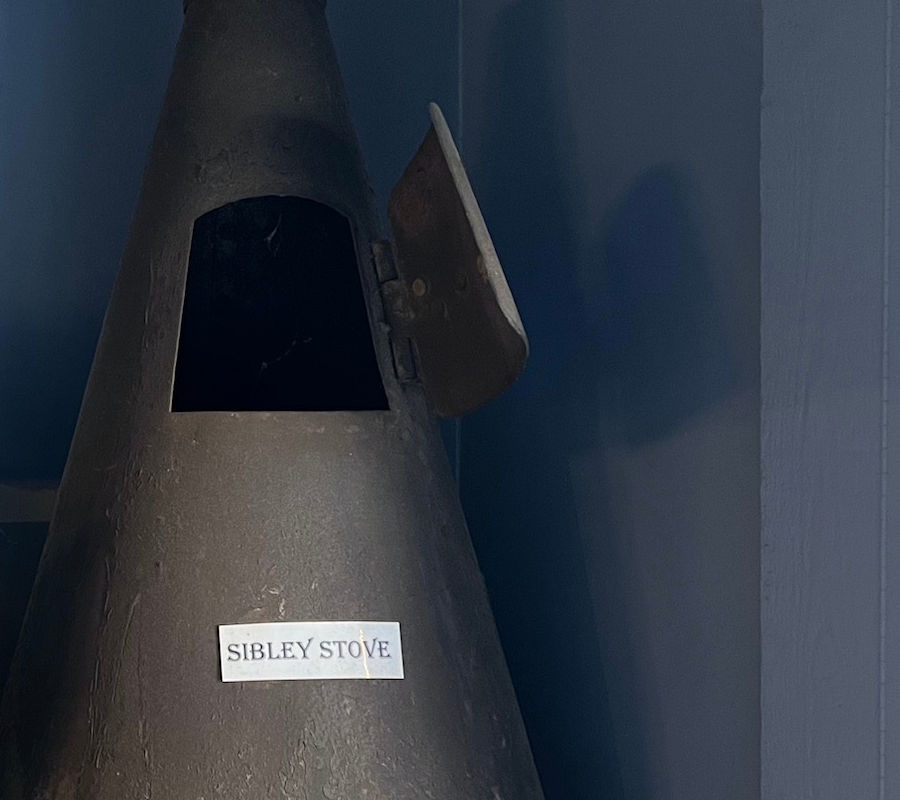

By Les Beitz
Another in the series "Frontier Relics, Their Scarcity and Value," dealing with one of the scarcest items of Frontier Americana
IN MY article "Frontier Relies" (TRUE WEST, October, 1964) I touched briefly on the Sibley stove as a scarce item of Frontier Americana. But there's such an interesting background and significance to that homely little bed-tent heater that it surely deserves broader recognition.
This unique stove was invented by an old-time Dragoon officer, Major Henry Hopkins Sibley, as an accessory to his campaign tent - the Sibley tent - for use by military detachments in the field.
Sibley, a West Pointer (Class of 1838) had accompanied Fremont on one of his expeditions in the West and had noted the advantages of the Plains Indian's tepee. One could hardly credit the Major with exercising great ingenuity or resourcefulness in developing his tent design since it was nothing more than a canvas adaption of the wigwam. However, the old boy came up with something special when he devised the little cone shaped tent warmer. Nothing could have been more simple to construct, more practical to use, or lighter to transport than the bottomless sheet-iron stove which he patented in 1857.
The Sibley stove was an airtight cylinder thirty inches tall with an eighteen inch base diameter. A small, semi-circular opening at the bottom served to provide draft and, when the draft required checking, the trooper merely kicked a little pile of dirt in front of the draft hole.
A hinged or slide door (depending upon the contracting metalsmiths's whim) was provided for admitting fuel. This door was eight inches high, six inches wide and eighteen inches from the bottom. The stovepipe connected to the top of the stove consisted of five sections, tapering down from five to four inches. The entire unit was placed beneath the tripod supporting the tent, with a chain and hook suspended from the fork of the tripod on which a kettle could be hung.
The stove weighed thirty pounds; patent data discloses that there were specifications for a twenty-five and alo an eighteen-pound model but I have never seen an example smaller than the stand...
with little or no mechanization to speed production.
The unattractive, nondescript characteristics of the Sibley have undoubtedly contributed measurably to its present scarcity. There was simply nothing about the design of this military-frontier relic to induce preservation by those who have come upon them in the one hundred years since their introduction.
A GOOD friend of mine who probes around old battlefield and fort sites unearthed one a couple of years ago but (Continued on page 54)
Gent Henry H. Sibley
The winter camp at Pine Ridge (below) shows stacks of Sibley stoves protruding from tops of tent quarters.
The remarkable old photo at the bottom depicts interior of officer's tent with stove, tripod and suspended pot: the complete Sibley stove and tent unit. Photos Courtesy Austin McKown
Mrs. Blackwell's rare find.
(Continued from page 27)
it was so mashed and deteriorated it was beyond restoration. Another collector I know recently secured one after a year long search, but these two were the only ones I'd come upon during the past few years until Mrs. Thelma Blackwell of Hardin, Montana, a TRUE WEST reader, forwarded a snapshot and brief account of one she had found. It is a remarkably well-preserved example - a real treasure. The fact that this stove was discovered in Montana is significant in establishing its relation to the post-war military campaigns against the hostile tribes and gives to it the hallmark of a true frontier relic.
Henry Honkins Sibley died at Fredericksburg, Virginia, on August 23, 1986. His tent and stove creations had netted him very meager recompense because when he resigned from the regular U S service in 1861 to accept a commission in the Confederate States Army, the Government refused to pay him royalty fees on his patents.
Major Sibley had originally entered into an agreement with the War Department to receive a $5 royalty on each to Sibley tent unit supplied to the army. Quartermaster records reveal that the Federal Army issued receipts for 43,958 tents during the four-year conflict; at $5 per, unit, this would have amounted to a pretty sizable head of lettuce but Uncle Sam consistently disallowed the claims and petitions of the officer and his heirs in the years following the war. Sibley's status as a regular U S. Army officer had been nullified by his alliance with the Lost Cause.
So today, he is chiefly remembered for that intriguing little sheet iron wrap ..







